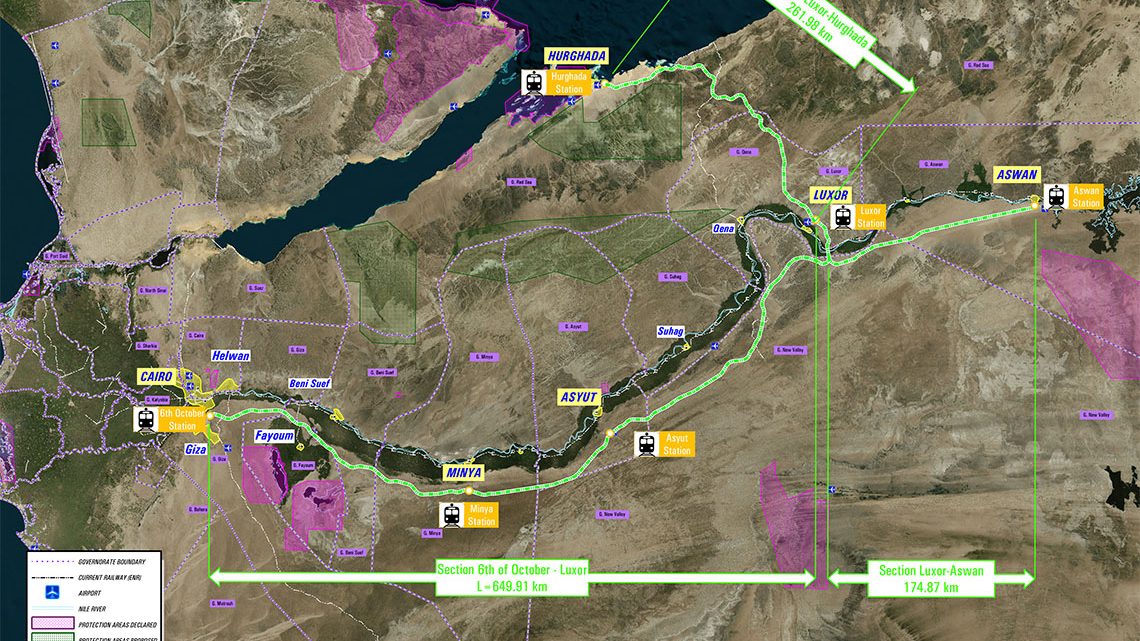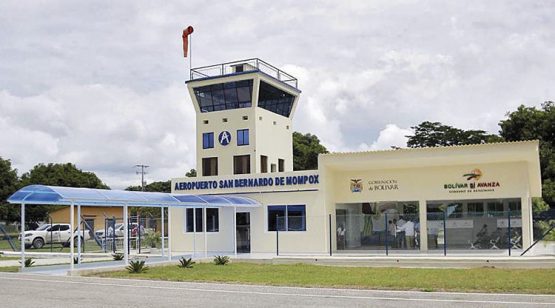According to Ancient Egyptian mythology, the god Ra sailed his ship along the celestial Nile, which corresponded to the great royal river that gave rise to one of the earliest civilizations in the world. The great temple of Luxor, dedicated to Ra –as well as to another deity, Amon– together with the nearby enclave of Karnak, near Thebes, the ancient capital of the pharaohs, together with the great pyramids and the Sphinx of Gizeh in Cairo, constitute some of the most important archaeological legacies that reflect its greatness.
Today tourism, and the activities related to it, have become one of Egypt’s most important economic engines, contributing a total of 12.8% to the national GDP and 11.6% of total jobs of the active population. Tourism policy, which originally focused on enhancing archaeological tourism around the Nile, has been diversifying in recent decades to make sun and beach tourism, mainly around Hurghada and Sharm El Sheikh on the Red Sea and Matrouh on the Mediterranean coast, one of the country’s biggest attractions.
In spite of Egypt’s enormous tourism potential, with the number of international visitors doubling between 2004 and 2010, with a record high of 14.7 million foreign tourists, the events related to the Arab Spring in 2011 paralysed this growth trend and caused it to fall to its current figure of 10 million. In 2010, archaeological tourism attracted 3.2 million visitors in the vicinity of Luxor and Aswan, with 30% corresponding to national tourists and 70% to international tourists. According to the internal mobility patterns analysed along the corridor, these visitors generated almost 5 million trips in the study area. Approximately 65% of the tourists reached the area through the airports in Cairo, Luxor and Aswan, while the remaining 35% came from the Hurghada region on private buses operated by tourist agencies. However, these 2010 statistics could increase significantly if the country regains political and social stability.
One of the main design criteria that conditioned the alignment was to minimize crossings over the Nile
Aware of their potential and the importance of tourism for the economic recovery and development of Egypt, the government wants to boost the production sector and is promoting a new model in which high speed enhances the synergies between cultural and leisure tourism, catalysing long-distance internal mobility within the country. The Ministry of Transport is studying two large corridors connecting the capital city of Cairo with Alexandria to the north, and to the south along the Luxor-Aswan axis and the Red Sea coast to the east. The implementation of high speed will transform Egyptian rail transport, offering connections with total travel times between key points similar to those of air travel, but with more regular service and expanded timetables, providing approximately 18 hours of daily service, plus punctuality and comfort at more competitive prices.
Egypt receives technical and financial support from the European Union to carry out its railway modernization plans. It is in this context that the collaboration agreement signed by the Egyptian minister of Transport and the Spanish minister of Economy and Competitiveness in April 2015, and the feasibility study carried out by Ineco with Adif and Renfe for the north-south corridor, financed from the Fund for the Internationalization of Enterprise (FIEM), are framed. The objective of the study, on which a multidisciplinary team with professionals of different specialities worked for 14 months, was to provide the Egyptian government with a useful tool for decision making in the process of implementing high speed in the country.
The study area
The feasibility study covers the corridor between Cairo and Luxor, and the areas from Luxor to Aswan and Hurghada. The proposed high-speed line comprises 650 km between Cairo and Luxor, an additional 175 km to Aswan, and 262 km between Luxor and Hurghada, totalling 1,087 kilometres of line and 6 stations: Cairo, 6th of October, Minya, Asyut, Luxor, Aswan and Hurghada. According to data from 2015, the population of the study area totalled 13.1 million inhabitants (14.9% of the country’s population) and mobility between the different defined areas is estimated at 38.5 million trips a year. In terms of the modal distribution, 29% of the trips are made in private shared vehicles, 28% in private vehicles, 23% by railway, 17% by bus and the remaining 3% by plane. This demand for transport translates into a market of some 4.1 billion Egyptian pounds annually. In terms of door-to-door travel times, specifically for the Cairo-Luxor connection, the minimum time for the road alternative is more than 7 hours, rail more than 10.5 hours, and plane 3.5 hours. The quantification and characterization of the mobility in the study area was based on the analysis of the available information and the results obtained from a campaign of surveys and traffic counts.
Tourism, the X factor
The success of the high-speed line will depend to a large extent on the recovery and enhancement of international tourism, which according to the demand forecast model would account for between 60% and 80% of the total number of passengers, depending on the scenario. The model takes into account three possible demand scenarios, high, medium and low, in two traveller segments: local and international. In order to prepare them, we took into account the forecasts of the Egyptian government in terms of GDP growth and also analysed different hypotheses regarding the recovery and development of international tourism.
The objective of the study was to provide the Egyptian Government with a useful tool for decision making in the implementation of high-speed rail
In the most optimistic scenario, the Ministry of Tourism expects to reach 20 million foreign tourists in 2020, which means an annual growth rate between 2014 and 2026 of 9%, much higher than GDP growth for that same period. In this context, passenger demand for the high-speed line would be 6.3 million per year. In the average scenario, visitor levels are expected to return to 2010 levels in 2026, with annual growth of 3.4%, very similar to GDP growth, and 3.3 million passengers on the new line. The least optimistic estimate places tourist recovery a decade later, in 2036, with annual growth of 1.8%, and 2.7 million high-speed travellers.
Technical feasibility
The technical feasibility analysis is based on the definition of the alignment of the future railway infrastructure and a comprehensive design at a scale of 1:25,000. For this purpose, different alternatives were studied at a scale of 1:50,000, and the most favourable one was selected applying a multi-criteria analysis: the optimal combination between factors such as construction costs, technical complexity (evaluated based on the length of structures and tunnels and the type of terrain), environmental conditions –giving particular importance to the preservation of the archaeological heritage–, the length of the route and the travel times obtained from the simulations.
The main design criteria that conditioned the alignment were based on minimizing crossings on the Nile River, avoiding mountainous areas and lands with high geotechnical risk –with high clay, saline or gypsum content– as well as areas with archaeological and environmental protection or impacts on farmland. The two intermediate stations
–Minya and Asyut– were selected for being the most populated of the route, as well as for their future growth potential according to the plans of the Egyptian government. With regard to the design speeds, on the corridor between Cairo, Luxor and Aswan, under very favourable topographic conditions, the maximum design speed is 350 km/h, while a maximum design speed of 250 km/h was chosen for the stretch between Luxor and Hurghada.
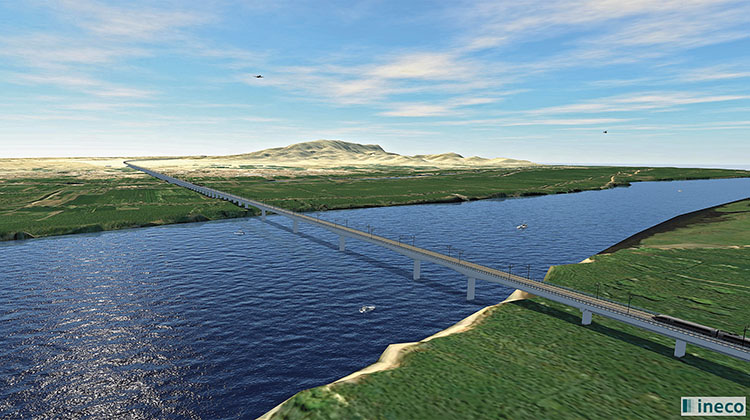
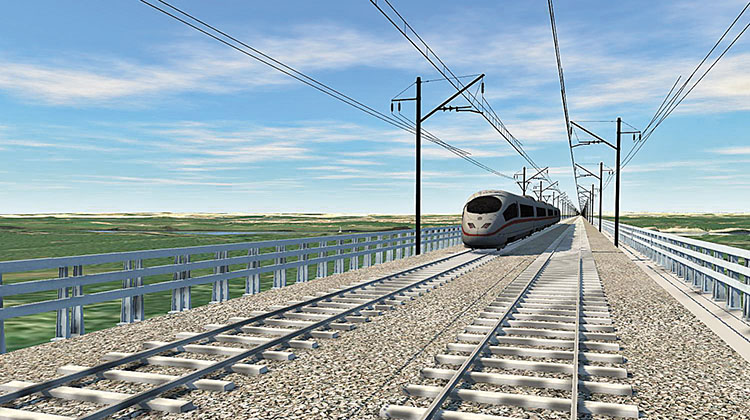
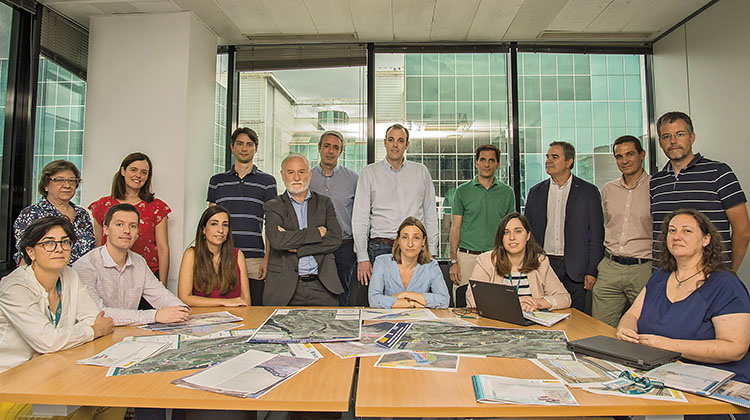
Once the most favourable alternative was identified, the Ineco team adjusted the alignment in greater detail, taking into account the analysis of the geotechnical and environmental factors, as well as comments received from the Egyptian government on future areas of development that could interfere with it. The geotechnical quality of the land of the proposed route is generally medium to high, except for some stretches, and does not interfere with protected natural areas or known archaeological areas. The potential risk of the track interference caused by desert sand was also analysed, and it it determined that part of the track design would use slab track. All these aspects will be addressed in more detail in later design phases.
The technical feasibility analysis also included the location and preliminary design of structures and tunnels, as well as passenger stations.
As for the operating plan, which is based on the demand of the scenarios analysed, the model recommended to the Egyptian government is based on trains with a maximum speed of 250 km/h, mainly for the following reasons: lower investment cost, approximately 30% less per unit, and lower operating costs –up to 25% less, based on experience in Spain. Also, the conclusions of the demand model show that, due to the fact that the travel motive of the potential passengers is predominantly leisure and the value of time is comparatively less than in the case of forced mobility, total travel times achieved with trains with a maximum speed of 250/h would be competitive. As an example, the Cairo-Luxor connection would be covered in 3 hours, requiring a commercial speed of 240 km/h.
The numbers
The study involves development of the high-speed line in three phases. The first would include the stretch between the capital and Luxor, which would begin service in 2026; Luxor-Aswan, in 2031 and the route to Hurghada, in 2036. The study covered an evaluation period of 50 years (from 2021 to 2070), which is the norm in profitability analyses. The socio-economic and financial profitability models were based on the inputs derived from the technical design, such as CAPEX and OPEX, as well as on the results obtained from the demand model: travellers attracted and mobility matrices with and without the project. It also took into account the specific conditions of Egypt’s macroeconomic framework and potential financing sources and conditions.
Summing up, it should be noted that the segment with the best results in terms of socio-economic and financial profitability is Cairo-Luxor-Aswan. The final report recommends that detailed studies focus on this corridor first, considering the results associated with the average demand scenario as more realistic. In regard to financing, the viability of the project would be contingent upon the ability of the Egyptian government to adapt to the proposed capital and debt structure, opting for multilateral financing sources in the pre-commissioning phase. In macroeconomic terms, it is estimated that during the construction phase, up to 9,800 direct jobs per year would be generated and total production of goods and services would increase by 13.9%. Once the line goes into operation, the impact on the Gross Domestic Product (GDP) would be 2.3%.
The creation of a public enterprise, preferably attached to the Ministry of Transport, is recommended to manage and operate the high-speed line. This entity would be in charge of the development, acquisition and integration of the components of the system, as well as of the overall coordination of the project. Once the line was operational, it would evolve into a control and management authority. On its part, the private sector would be responsible for the design, construction and maintenance of infrastructure and systems, the supply and maintenance of rolling stock, as well as traffic control and operation of services.
As a final recommendation, although the Cairo-Alexandria corridor was not included in the study, the Egyptian government should plan the high-speed network as a whole, in order to take advantage of the economies of scale generated by the more important corridors.
Railway transport in Egypt, present and future
Egypt, the most populous country in the Arab world with more than 90 million inhabitants (according to United Nations data for 2016), is currently in the process of modernizing and improving its railway, which was the first to be built on the African continent, mostly in the second half of the nineteenth century.
According to the national ENR, Egyptian National Railways, which manages and operates the network, this network consists of 9,570 kilometres of track, mostly without electrification, with 1,466 km of double track, 20 km of quadruple track, and the rest single track. The speed of passenger trains currently ranges between 90 and 120 km/h. They have three categories and fares –first, second and third– and sleeper cars, and transport 500 million passengers annually, 1.4 million a day.
There are 705 stations, including 22 large stations. During the last decade, some of the most important stations, such as the Ramses station in Cairo and the Sidi Haber station in Alexandria, have been renovated. The infrastructure, equipment and trains for improving safety are also progressively being upgraded: the French firm Thales has been contracted to implement modern electronic signage, which, according to ENR, already exists on 15% of the lines, and the rolling stock is also being upgraded.
WHAT THE FUTURE HOLDS FOR THE NILE’S HIGH-SPEED LINE’
- Cairo-Luxor stretch: 650 km, double track, max commercial speed: 240 km/h. Structures: 47 viaducts (21 km), 4 tunnels (11 km): 5% of the total length of the stretch. Entry into service: 2026.
- Luxor-Aswan stretch: 175 km, double track, max commercial speed: 230 km/h. Structures: 7 viaducts (485 m) and no tunnels: 0.3% of the total length of the stretch. Entry into service: 2031.
- Luxor-Hurghada stretch: 262 km, double track, max commercial speed: 234 km/h. Structures: 20 viaducts (9 km), 5 tunnels (6 km): 6% of the total length of the stretch. Entry into service: 2036.
STATIONS
Six: Cairo, 6th of October, Minya, Asyut, Luxor, Aswan and Hurghada.
ROLLING STOCK
Maximum speed of 250 km/h, 8-car compositions, 200 metres long and a capacity of 534 passengers per train.
RAILWAY SISTEMS
- Electrification: 25 Kv AC.
- Signalling and telecommunications: ERTMS level 2 and GSM-R.
CENTRALIZED TRAFFIC CONTROL CENTRE
One, located at Cairo-6th of October station.
MAINTENANCE BASES: Six.
DEPOTS AND WORKSHOPS
Two, the main depot in Cairo, with a workshop for level 1 and 2 maintenance, and a second depot in Luxor, with a level-1 maintenance workshop.
The stations
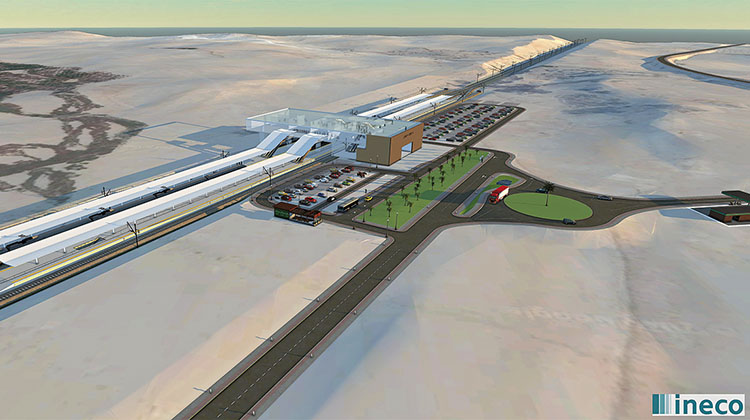
Computer rendering of the Luxor station.
One of the keys to the success of high speed lies in the location and functionality of the stations, so the study proposes their location and preliminary design, taking the following criteria into account:
- Location outside the city centre to minimize complications and additional costs generated in urban areas (expropriation, tunnelling, vibrations, etc.). In the case of the Cairo station, the viability of the future connection with the Cairo-Alexandria corridor was taken into account.
- Accessibility and intermodality with other complementary modes of transport, to guarantee competitive access and dispersion times, minimizing door-to-door travel times.
- Development by phases, based on the evolution of demand in the period taken into account (50 years). The total area required includes the conditions of maximum development.
- Design from modular plans that allow strategies for sustainable growth and minimal disruption of station operation.
- Definition of sizes and types based on the needs of travellers getting on and off at rush hour, defined by the demand study and based on international experience, and the specific railway functionality for each location.
- Dimensioning of functional and operational areas of the stations and their auxiliary spaces (retail, services, facilities, etc.), seeking to provide a level of service suitable for the type of line proposed.
- Proposed type and size of outdoor areas (parking, bus stops and taxi, drop off & pick up areas) based on the study of methods of approaching and departing from the station, suggesting growth that is compatible with the development stages of the station.


